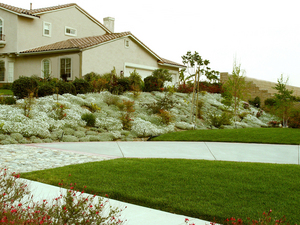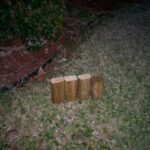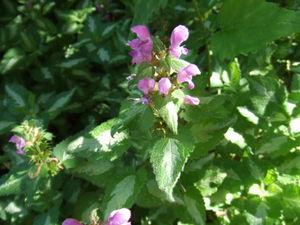With so many groundcovers to choose from, picking one that serves all your needs can sometimes be tricky, especially when it comes to trouble spots in the lawn. However, there’s one groundcover that literally ‘covers’ it all. From problem areas to attractive edging, monkey grass is an easy-care, low-maintenance groundcover that offers homeowners countless possibilities for use in the lawn and surrounding landscape. Monkey grass has many common names including lily turf, liriope, mondo grass, and snakesbeard.
There are many varieties of monkey grass, all of which belong to one of two genuses-Liriope or Ophiopogon. So what do these Asian natives provide that most other groundcovers may not? For starters, monkey grass is easy to care for; it’s heat and drought tolerant; and it’s extremely hardy, growing in many types of soil and surviving under numerous conditions. This thick groundcover resists weed invasions, is rarely affected by pests and diseases, requires little or no fertilizing, and performs effectively wherever it’s needed. All that’s required is finding the right one to fit your individual needs. For instance, some types of monkey grass creep and spread along, while others are clump forming. Some varieties of monkey grass enjoy sun, while others do well in shaded areas.
Most types are evergreen, providing year-round interest. Money grass also produces spiky summer blooms followed by attractive berries in the fall. For additional interest, there are variegated varieties too. The most commonly used variety of monkey grass is Liriope muscari. This clumping form is often used as edging for beds, borders, and walkways. Most of these produce lovely purple-spiked blooms and dark purple berries; however, there is also a white-flowering variety as well. Monkey grass usually ranges in height from 10 to 15 inches but taller, shrub-like forms are also available and widely used for foundation plantings. L. spicata, commonly called creeping liriope, does well in trouble areas of the lawn, such as slopes. As this form can be an aggressive spreader, it should not be used in small garden beds as it could choke out other plantings. However, in larger garden beds, creeping liriope will effectively fill in empty spaces while adding foliage interest to the garden.
Ophiopogon japonicus, often referred to as mondo grass, is another popular form of monkey grass, and are generally considered smaller versions. This type has fine, darker colored foliage and works well in settings that are more formal. This variety also tends to perform better in shadier areas as opposed to full sun. Heights vary from two to twelve inches, depending on the particular species. Dwarf mondo grass (O. japonicus ‘Gyoku Ryu’) is great for use along paths and in between pavers or stepping stones. If you’re looking for something different or perhaps more dramatic, consider nearly black foliage of black mondo grass (O. planiscapus ‘Nigrescens’).
All forms of monkey grass can be easily lifted and divided whenever needed. As with most plants, monkey grass requires good drainage for best results. The brownish foliage of monkey grass should be cut back prior to new growth, usually in late February or early March. Cutting back this foliage not only promotes new growth but also helps to rejuvenate the plants. Monkey grass is a great groundcover for the lawn, growing in areas where most turf grasses won’t such as beneath trees or along steep slopes. It can even be used as a low-maintenance lawn substitute. Monkey grass looks great mixed with other foliage plants and flowers and can be successfully grown in containers. It’s a common landscaping feature here in the South but is so versatile that it can grow nearly anywhere. With so many possibilities, monkey grass is truly an exceptional choice for attractive ground coverage in the lawn and surrounding landscape.







